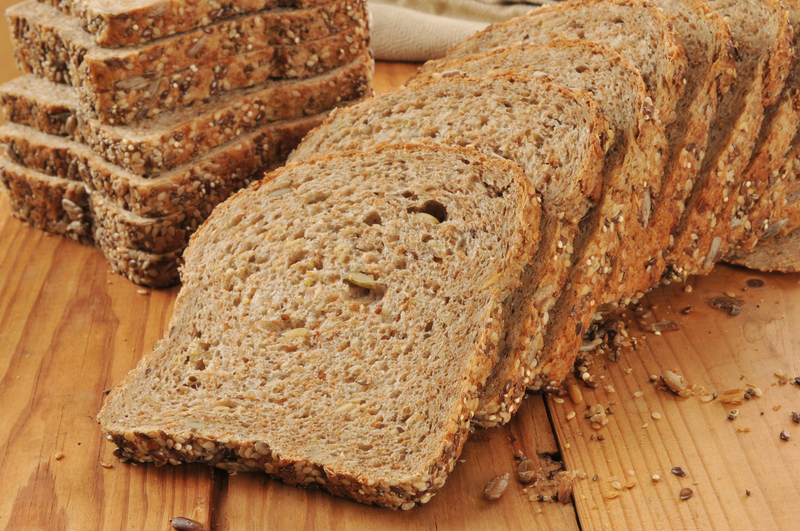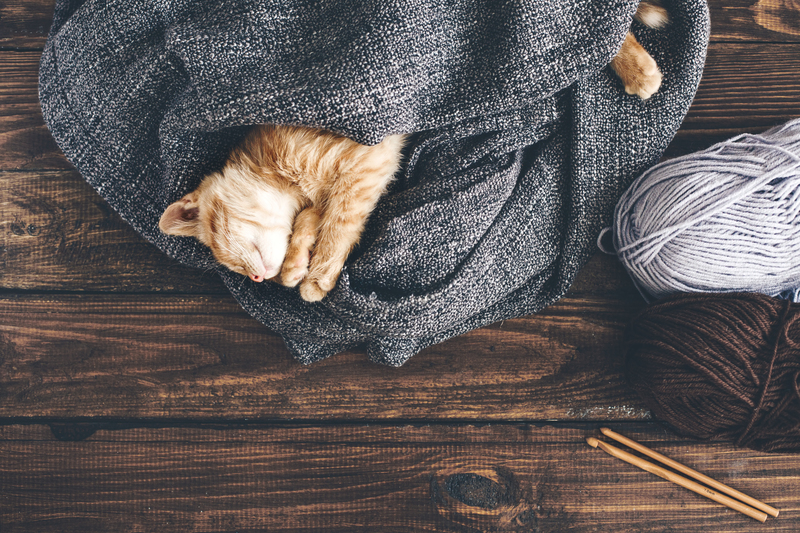Sofa Cover Restoration: Secrets to Shrinkage-Free Washing
Posted on 22/08/2025
Sofa Cover Restoration: Secrets to Shrinkage-Free Washing
Your living room should be a relaxing sanctuary, and your sofa is a central piece that deserves top-notch care. Many homeowners hesitate to wash their sofa covers for fear of shrinkage or distortion. But with the right knowledge, you can restore your sofa covers, making them look fresh and new, without worrying about shrinkage. In this comprehensive guide, we'll reveal the secrets to sofa cover restoration and explain how to master the art of shrinkage-free washing.

Why Proper Sofa Cover Care Matters
Over time, sofa covers accumulate dust, stains, pet hair, and odors. Regular cleaning not only improves their appearance but also contributes to a healthier home environment. However, improper washing is the primary cause of shrinkage in sofa covers, leading to poor fit and an unsightly appearance.
- Prolongs the life of your sofa cover
- Prevents color fading and fabric weakening
- Enhances indoor air quality by removing allergens
- Maintains the aesthetic integrity of your living room
Understanding the causes of shrinkage and how it can be avoided is key to effective sofa cover restoration.
Common Causes of Sofa Cover Shrinkage
Shrinkage is primarily caused by a combination of heat, water, and mechanical action. Understanding these factors is essential to prevent your sofa covers from losing their original shape.
- High temperature water: Fabric fibers contract when exposed to hot water, causing covers to shrink.
- Improper drying: High heat from tumble dryers or wringing can distort fabric structure.
- Agitation in washing machines: Overly aggressive washing cycles damage the fibers.
- Incorrect detergent selection: Harsh chemicals may weaken fibers, making them susceptible to shrinkage.
Armed with this knowledge, you're ready to learn techniques for washing sofa covers without shrinkage.
Pre-Wash Tips: Preparing Your Sofa Covers for Washing
A successful sofa cover cleaning process begins with careful preparation.
1. Check the Manufacturer's Label
Always look for care instructions provided by the manufacturer. Labels provide essential details about water temperature, recommended detergents, and whether the cover is machine washable or dry clean only.
2. Test for Colorfastness
Before fully washing, test a hidden area for color bleeding. Dampen a white cloth, dab it on the fabric, and check for color transfer. If color transfers, opt for a gentle hand wash or professional cleaning.
3. Pre-Treat Stains
Spot-clean visible stains with a fabric-safe cleaner. Gently blot the area--never rub to avoid embedding the stain further into the fibers or causing pilling.
4. Remove Debris
Vacuum the sofa covers to remove dust, pet hair, and crumbs. This step prevents dirt from embedding during washing and ensures a thorough clean.
The Washing Process: Sofa Cover Restoration Without Shrinkage
Ready to restore your sofa covers? Follow these detailed steps to ensure a fresh result--every time.
1. Choose the Right Washing Method
- Machine Washable: If your sofa slipcovers allow for machine washing, select the gentlest cycle with cold water.
- Hand Wash Recommended: For delicate fabrics or covers prone to shrinking, fill a tub with cold water and a mild detergent. Carefully agitate by hand and avoid excessive wringing.
- Dry Clean Only: Trust professional sofa cover restoration experts to handle special materials.
2. Pick the Correct Detergent
Choose a mild, color-safe detergent free of bleach or harsh chemicals. These products are less likely to damage fibers or cause unwanted reactions that may lead to shrinkage.
3. Avoid Overloading the Washer
Wash sofa covers separately or with light loads to reduce friction and prevent the fabric from being stretched or torn during the wash cycle.
4. Use Cold or Lukewarm Water
Hot water is the enemy of most natural fibers. Wash using cold or, at most, lukewarm water to prevent fabric contraction and maintain colors.
5. Gentle Rinse and Spin
If machine washing, use the slowest spin cycle. High-speed spinning can twist or stretch fabric, sometimes permanently damaging the cover's shape.
Drying Strategies: Preventing Shrinkage and Warping
- Never use high heat. Excessive heat from tumble dryers is the number one cause of shrinkage.
- Air-dry when possible. Lay sofa covers flat on a clean surface or dry them on a line out of direct sunlight to maintain shape.
- Reshape while damp. Gently stretch and smooth the covers while they are still damp to return them to their original size and fit.
- Avoid sharp creases. Hang or arrange covers to prevent folding lines.
- Iron with caution. If you must iron, use the lowest heat setting and a pressing cloth.
Drying Step-by-Step
- Remove sofa covers promptly after the wash cycle ends.
- Place them flat on a large towel or rack, avoiding direct sunlight and heat sources.
- Gently reshape as needed, especially around the zipper or seams.
- Allow to dry completely before reinstalling them on the sofa.
Restoring Stretch and Softness After Washing
Even with optimal care, some covers may seem slightly tight after drying. Here are some techniques to restore the original fit:
- Steam the fabric: A handheld garment steamer can relax fibers and reduce any remaining tightness.
- Hand-stretch gently: Carefully pull on seams and corners to ease the cover into shape.
- Use fabric softener: For future washes, add a small amount of fabric softener to maintain the sofa cover's elasticity and plushness.
Expert Tips for Ongoing Sofa Cover Restoration
1. Regular Maintenance
Vacuum sofa covers weekly, and attend to spills immediately. This prevents the need for frequent washing and reduces the risk of wear and shrinking.
2. Rotate Covers
If you have replacement covers, alternate them every few months to reduce constant washing and help each set last longer.
3. Avoid Sun Fading
Keep sofas and covers out of harsh sunlight during drying and daily use to maintain color vibrancy.
4. Professional Cleaning
For stubborn stains or delicate fabrics like velvet and silk, seek professional sofa cover restoration services to ensure expert handling.
Shrinkage Myths and Facts: Setting the Record Straight
- Myth: All fabrics shrink the same amount.
Fact: Natural fibers like cotton and linen are much more prone to shrinkage than synthetic blends. - Myth: Cold water alone can prevent shrinkage.
Fact: Both water temperature and drying method determine outcomes. - Myth: It's safe to tumble dry sofa covers.
Fact: Unless labeled as dryer-safe, air drying is the safest route to shrinkage-free results.
The Best Washing Practices for Popular Sofa Cover Materials
Cotton Sofa Covers
- Temperature: Always use cold water.
- Drying: Air-dry and reshape while damp.
Linen Sofa Covers
- Washing: Hand wash preferred, gentle cycle possible with cold water.
- Drying: Lay flat and stretch gently to retain original fit.
Polyester and Synthetic Blends
- Washing: Machine washable, safe with mild detergent.
- Drying: Low tumble or line-dry recommended.
Velvet and Specialty Fabrics
- Washing: Often dry-clean only; check manufacturer's care tag.
- Drying: Never machine dry. Air only.
What To Do If Your Sofa Cover Shrinks
If your sofa cover shrunk, take action before it dries completely:
- While damp, stretch gently by hand, pulling along the seams and corners.
- Steam the fabric as you reshape, which can help relax and lengthen fibers.
- If irreversibly shrunk, consider a professional alteration service to tailor the fit or use as a backup for pets or outdoor furniture.
DIY Sofa Cover Restoration: Can You Reverse Shrinkage?
While some shrinkage is permanent, minor size losses in natural fibers may be reversible. Soak covers in lukewarm water with a fabric conditioner for 30-60 minutes, then gently stretch out the fabric and dry flat, reshaping continually as it dries. Results vary by material, age, and original laundering methods.
Essential Dos and Don'ts for Shrinkage-Free Sofa Cover Washing
- Do check care labels every time before washing.
- Do close zippers, buttons, and velcro to maintain cover shape during washing.
- Don't wring or twist fabric when wet.
- Do use mesh bags for delicate fabrics in washing machines.
- Don't ignore manufacturer instructions even if previous washes were fine.
The Environmental Impact of Sofa Cover Restoration
Regular, gentle sofa cover cleaning benefits the environment by extending the life of your furniture and reducing landfill waste. Opt for eco-friendly detergents and prioritize air drying to save energy--an easy, responsible choice for the planet.

Final Thoughts: Elevate Your Home with Shrinkage-Free Sofa Cover Cleaning
Beautiful sofa covers can transform your living space, but only if they're well maintained. With the right techniques, sofa cover restoration can be easy and effective, ensuring shrinkage-free washing every time. Remember to respect care labels, use gentle cycles with cold water, and air-dry your covers for best results. Achieve a fresh, inviting home--and keep your sofa looking its absolute best--all year round!
Frequently Asked Questions About Sofa Cover Restoration
Can I wash all sofa covers at home?
No. Always check the care label first! Some materials require dry cleaning or professional restoration.
Why did my sofa cover shrink after washing?
Shrinkage usually results from hot water, harsh detergents, or high-heat drying. Always use gentle methods for shrinkage-free washing.
How often should I wash sofa covers?
For a typical household, every 3-6 months is ideal, with more frequent spot-cleaning if you have pets or children.
What if the cover shrunk and no longer fits?
Try stretching while damp or steaming. Otherwise, consider having it professionally altered or replaced. Avoid future shrinkage by following the guidelines above.
With these secrets to sofa cover restoration, you'll always have a living room that's inviting, beautiful, and *shrinkage-free*--restoring your covers to perfect condition, wash after wash!



